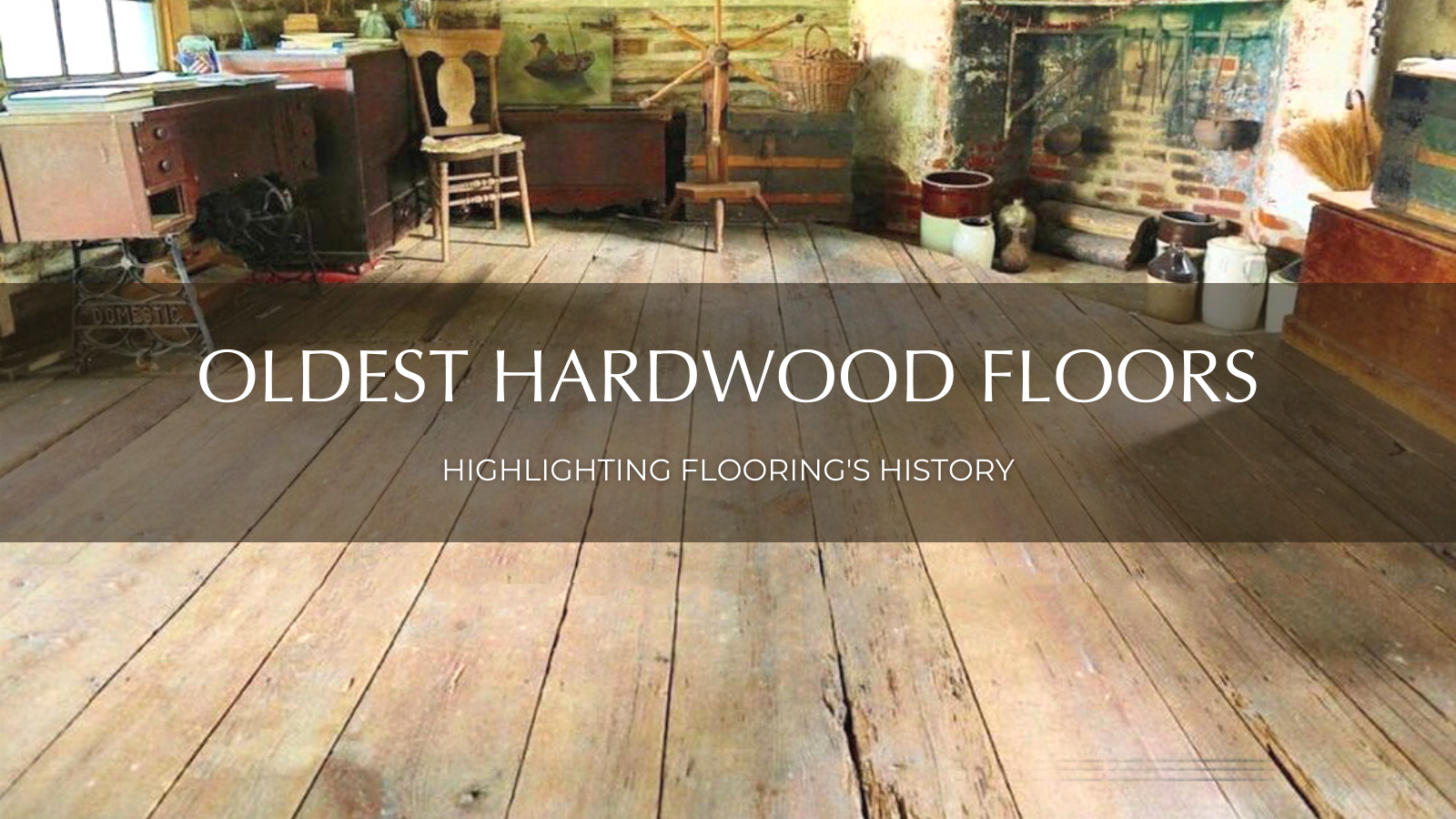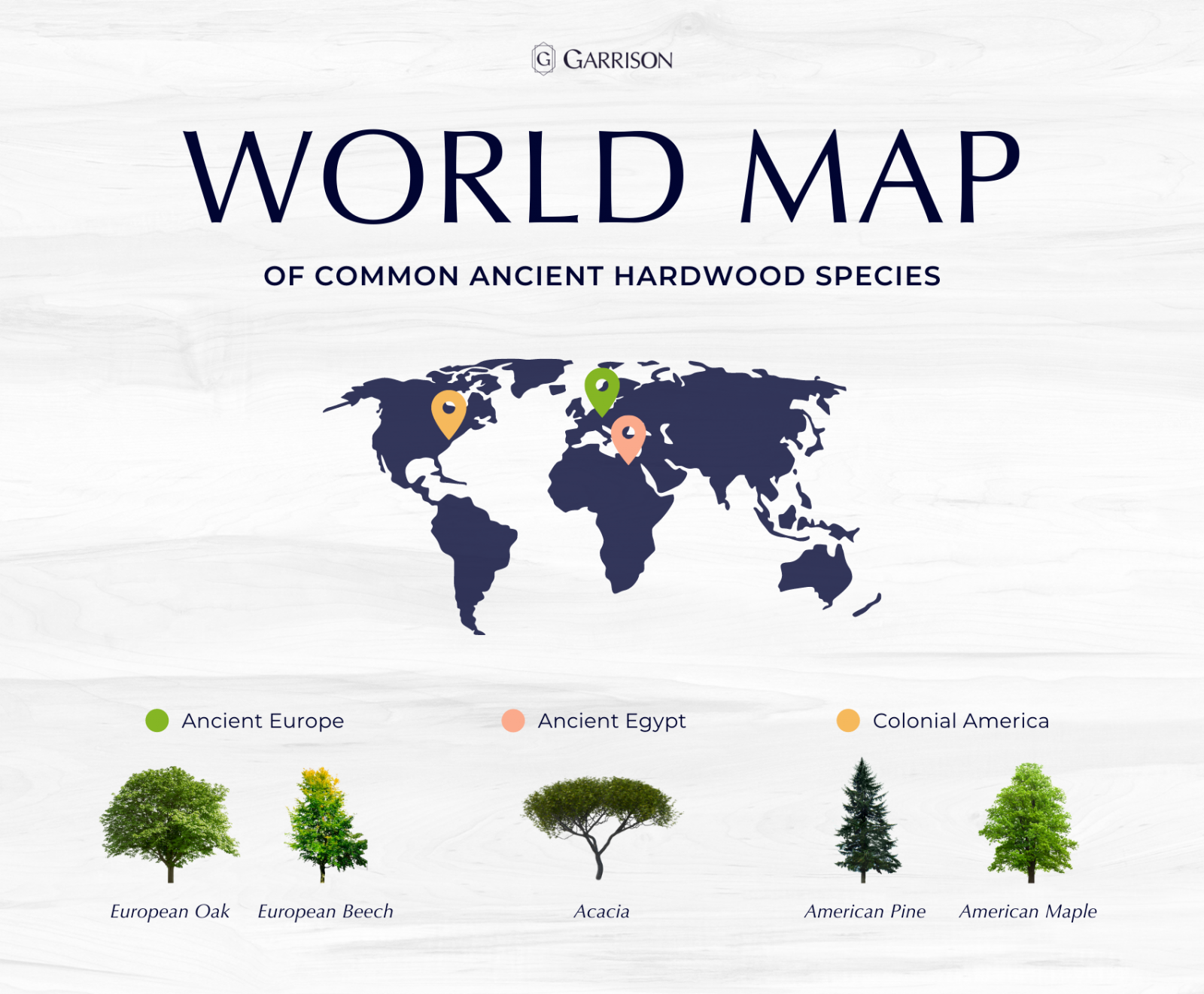History Highlights: The Oldest Hardwood Floor
Known for its longevity and durability, hardwood flooring has remained one of the most popular flooring options around the world. And it’s been this way for hundreds of years. Yes, hundreds.
In fact, the oldest hardwood floor (or at least one of the oldest that we know about) is still in use three centuries after it was first installed. So, with that, let’s dive in and find out –
- How old is the oldest hardwood floor?
- When was hardwood flooring first used?
- What types of hardwood were used throughout history?

How Old is the Oldest Hardwood Floor?
In order to answer just how old the oldest hardwood floors are, we need to break it down into two parts; still in existence and lost to history.
The Oldest Hardwood Floor Still in Existence
Constructed in 1638, the Braman-Nothnagle Log House in New Jersey is known not just for its age, but for the age of its hardwood flooring as well.
The home initially had dirt floors throughout until nearly 90 years later when hardwood flooring was added. This makes the floors approximately 300 years old (and still going strong)!
It should also be mentioned that there are likely older wood floors still in existence; however, they have yet to be made public.

The Oldest Hardwood Floor Lost to History
While no fully intact examples have been found to be in existence at the present, the oldest hardwood floors in recorded history can be traced back to around 3,000 BC in ancient Egypt! However, these ancient flooring planks were reserved solely for stairs in an attempt to protect them from wear and tear.
When Was Hardwood First Used
As mentioned above, hardwood flooring’s origins began in ancient Egypt where it was used as a stair covering to protect against wear and tear.
Wood flooring throughout a space, rather than solely for stairs, can be traced as far back as approximately 1600 BC in Ancient Qatna – now known as Syria. Buildings constructed with hardwood floors were reserved for powerful individuals and often placed within tombs and palaces. It’s thought that even the king’s banquet chamber featured hardwood flooring.
Other early attempts at using hardwood flooring can be found throughout portions of Ancient Rome as well. Buildings of importance often featured hardwood flooring throughout; a design choice distinctive from the widespread use of mortar, concrete, clay, and beaten earth as flooring materials.
However, over the past thousand years, many of these floors have been destroyed or have disintegrated due to enduring a millennium of extremely damp conditions. All that can be found are traces and remnants of what once stood.
What Types of Hardwood Were Used Throughout History
Prior to the last century, importing exotic, non-native species of wood for use in flooring was practically unheard of. Instead, those who wanted a hardwood floor made do with what they had available in their vicinity.
From 3000 BC until the 19th century, hardwood species were selected due to their proximity to the building site. Repurposing was also quite common – wooden ships would often be deconstructed and their lumber reused for construction purposes.
So, if an old-growth grove of European Oak resided by your plot of land in ancient Europe, that would be the material used. The same can be said for Colonial Americans that used the pine and maple from the trees surrounding their homes.
And in ancient Egypt, Acacia, now recognized as one of the strongest hardwoods available, was the most popular option of the time due to its widespread availability in the region as well as its durable composition.

Finishing Up On the Oldest Hardwood Floor
Hardwood flooring has gained traction as a popular construction material over thousands of years. Today, it’s one of the most common flooring options available.
Unfortunately, the oldest hardwood floors have been lost to history. However, modern examples still exist such as the Braman-Nothnagle Log House from 1638 or the Amerongen Castle from 1680.
And even after hundreds of years, these ancient floors are still going strong.
To read more about hardwood flooring’s history, click here or learn how you can design your own flooring using historical influences by clicking here.